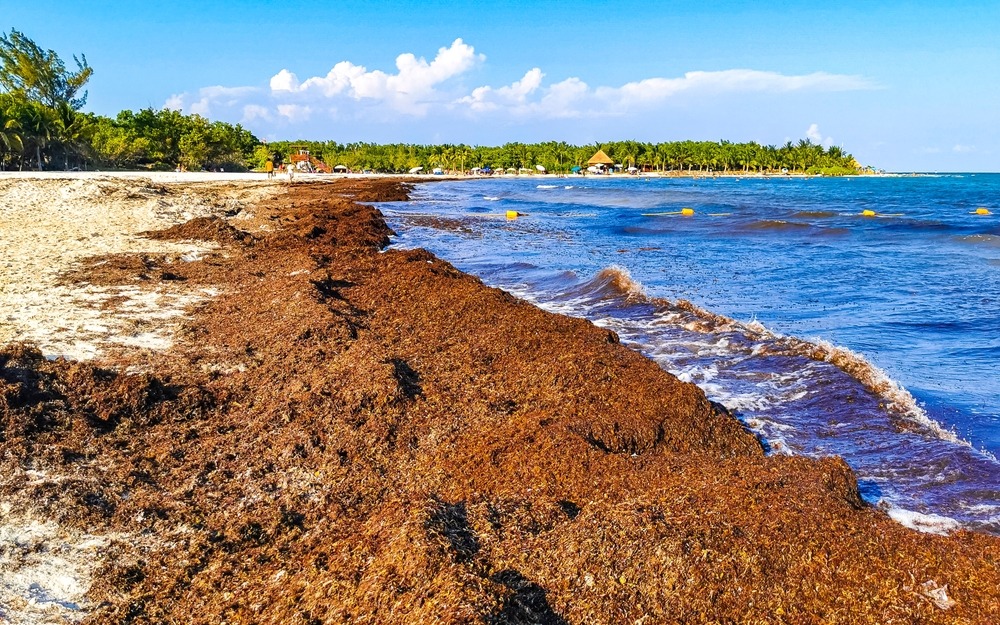Mexico is preparing to transform one of the Caribbean’s most persistent environmental challenges—seasonal sargassum algae blooms—into a scalable feedstock for sustainable aviation fuel (SAF), in a move that could reshape both regional tourism and global aviation supply chains.
The initiative, led by Mexico’s Ministry of Environment and Natural Resources (SEMARNAT), aims to convert the vast quantities of sargassum washing ashore each year into biofuel, helping airlines meet their fuel-blend obligations under ICAO’s CORSIA framework and national mandates. The plan was unveiled during a recent ministerial summit on regional environmental action, with SEMARNAT calling for multinational cooperation to tackle what it described as “a phenomenon without borders.”
Sargassum has long plagued the Caribbean coastline, releasing toxic gases as it decomposes and costing local communities millions in clean-up operations. In May 2025 alone, a record-breaking 39 million tons of the algae were recorded in the Caribbean Sea, reaching as far as the Atlantic Ocean. The University of South Florida’s Optical Oceanography Laboratory reported “significant inundation events” across the region, including Mexico’s popular tourist destinations.
At the state level, Quintana Roo has already broken ground on a Comprehensive Sargassum Sanitation and Circular Economy Centre. Initially focused on biogas production, the facility is expected to evolve toward SAF processing. According to Nopalimex bioenergy director Miguel Ángel Aké Madera, 500 tons of sargassum can yield 20,000 cubic metres of biogas—equivalent to the daily fuel sales of a typical Mexican petrol station. “This is not a marginal solution—it is a scalable one,” Aké told Wired.
Mexico’s approach differs from other regional experiments by proposing a state-backed commercial supply chain. While Puerto Rico and other Caribbean nations have explored algae-to-energy conversion, Mexico could become the first to institutionalise sargassum as a SAF feedstock.
The aviation sector is watching closely. With IATA forecasting a need for 120 billion litres of SAF annually by 2050, feedstock availability remains a critical bottleneck. Sargassum offers several advantages: it is non-edible, grows rapidly without farmland, and its collection actively mitigates environmental damage in tourism-dependent economies.
For airlines operating in Latin America and the Caribbean, the prospect of a locally sourced SAF is particularly attractive. Not only does it support decarbonisation goals, but it also aligns with broader ESG strategies and regional sustainability commitments.
While Mexico’s sargassum-to-SAF programme is still in its early stages, the political momentum and private-sector interest suggest rapid development. For business travellers and aviation stakeholders alike, this initiative represents a compelling example of how environmental challenges can be reimagined as strategic opportunities.


